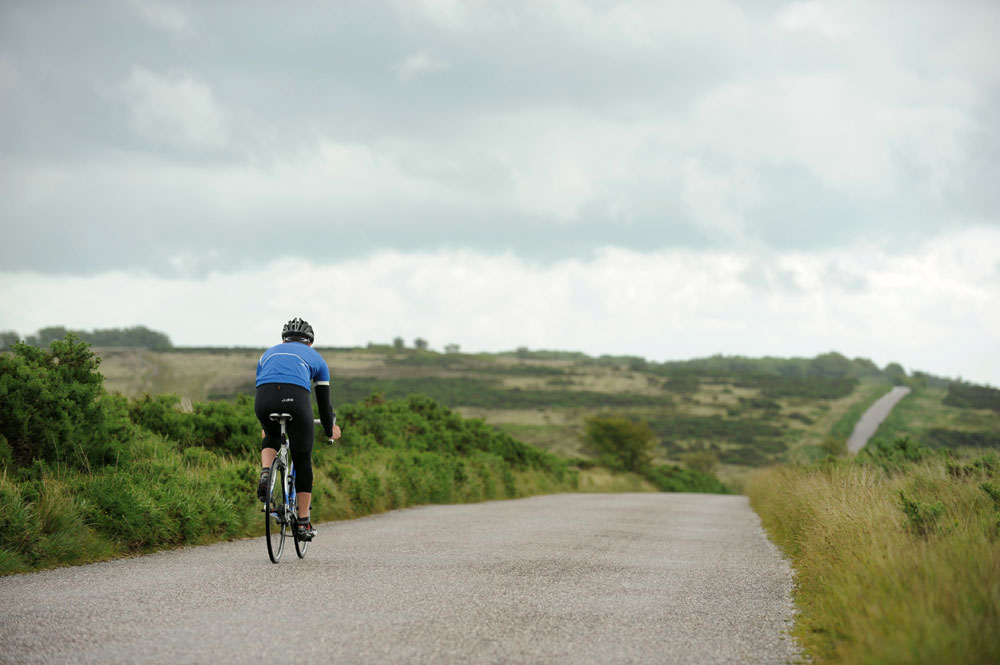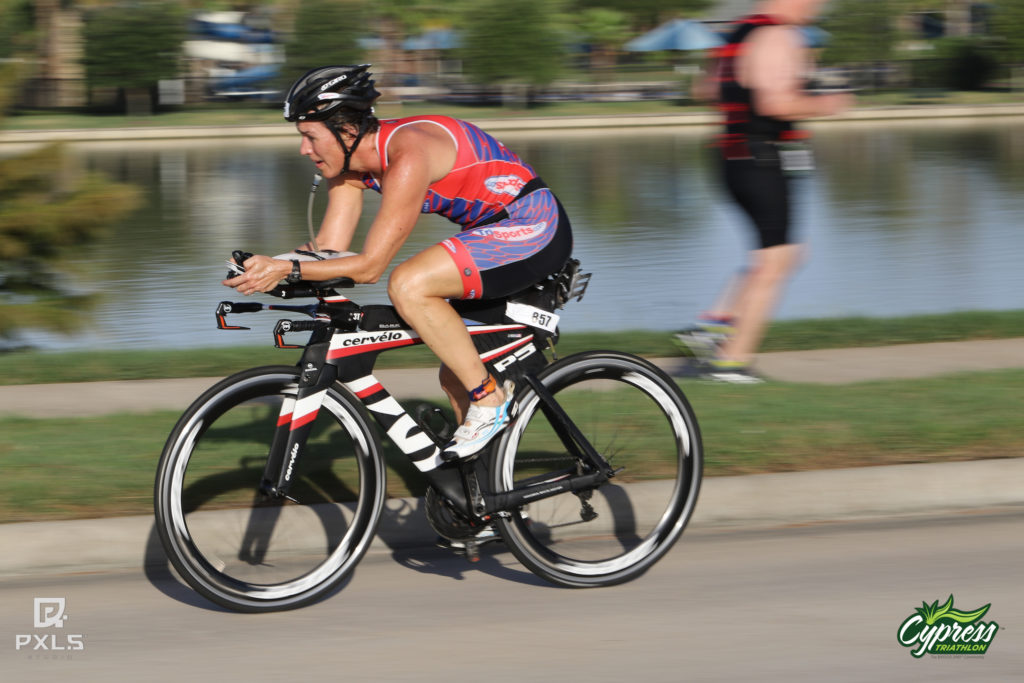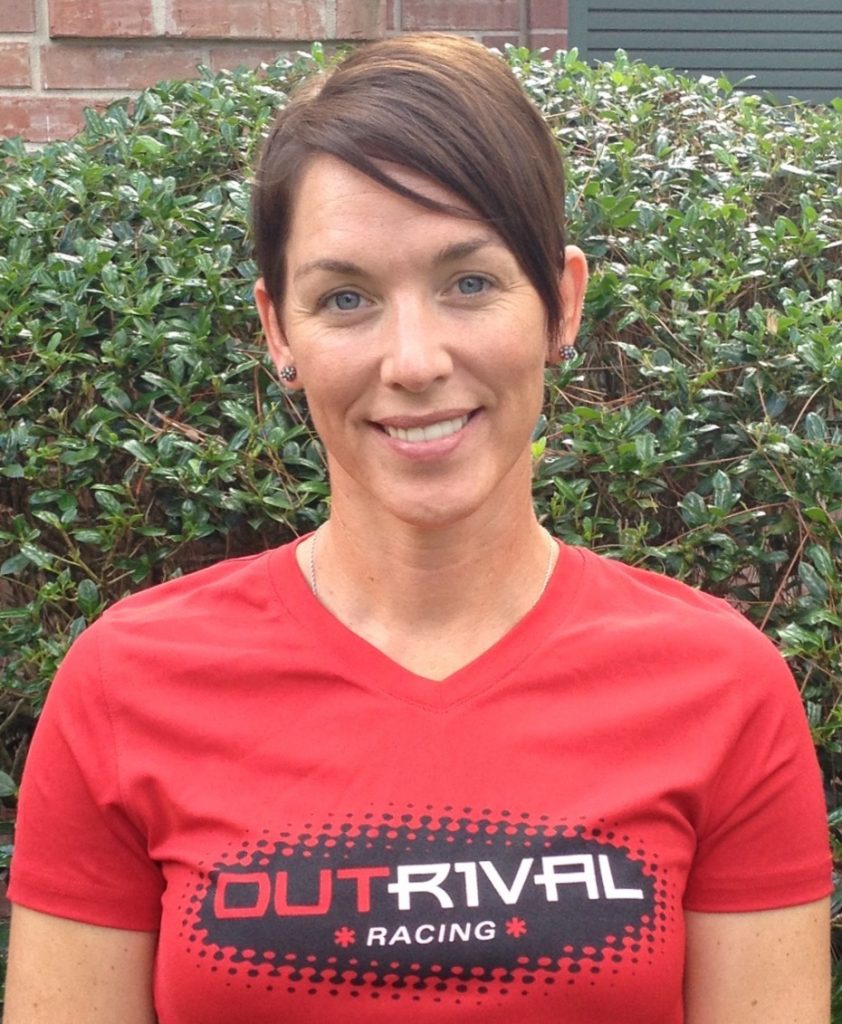Written by Dawn English, OutRival Racing Premier LII Coach

When you climb on your bike you cannot escape! Walking your bike is certainly no fun, plus it is difficult to get going again. What can you do to climb your best?
Know Thy Gears
Go through all of your gears, feel comfortable using all of them on a flat road and a climb. Often, athletes get comfortable only using a few gears, but not being able to smoothly change gears. Only shift one gear at a time.
Anticipate
At the base of the climb change into a lower a gear one by one until you find a gear that you can pedal with some pressure and stay smooth.
Body Position
Shift your hips to the back of the saddle and make sure to drive your heels down on the downstroke. Doing this will engage your hamstrings and glutes, the biggest muscles in your body. Make sure to have your torso and upper body relaxed and open. Remember to also keep your hands relaxed. Tension in your upper body translates to tension in your pedal stroke that will decrease your efficiency, power and speed.
Don’t Completely Stop at the Top
Congratulations, you made it to the top of the climb! Do not stop pedaling. Just as you did at the base of the climb, gradually decrease your gears to one where you can pedal at a steady cadence with control.
Cadence
Cadence, or RPMs, refers to the revolutions per minute of your pedal stroke. Much debate has taken place regarding cadence for triathletes. Most research done on the subject has been taken from professional cyclists. But, even among professional cyclists the ones at the top seem to ride at a higher cadence than those in the middle of the field. This could be because faster riders have a more efficient pedal stroke and can ride in a bigger gear. But, pedaling around 80 rpms, even on a climb is often preferred and is a good place to start. In the study, Effect of Cycling Position on Oxygen Uptake and Preferred Cadence in Trained Cyclists During Hill Climbing at Various Power Outputs by Chris Harnish, Deborah King & Tom Swensen found: “Collectively, our data show that the trained cyclists preferred a relatively high cadence of 80 rpm during seated climbing on a moderate grade at power outputs greater than 65% of PPO (Peak Power Output).”

Gaining Power and Losing Some Extra Baggage
How much power you can produce relative to your weight makes a big difference in your ability to climb. Take your body weight and divide by 2.2 to convert your weight to kilograms. Then, take your 20 minute TT average power and divide the kg number into the wattage number. The bigger this number, the more power per kilogram you produce. To give you an idea, a 130 pound female that rides 180 watts for a 20 minute TT churns out 3.05 watts per kilogram. A 190 pound male that rides 220 watts for a 20 minute TT churns out 2.64 watts per kilogram. Guess who wins up the mountain? You got it…the 130 pound woman. Increasing your power output and/or losing a little weight can make the hills come and go faster.
Body Position
Shift your hips to the back of the saddle and make sure to drive your heels down on the downstroke. Doing this will engage your hamstrings and glutes, the biggest muscles in your body. Your waist to the top of the your head should be relaxed and open. Keep your hands gently holding your handlebars. Tension in your upper body translates to tension in your pedal stroke that will decrease your efficiency, power and speed.
Don’t Stop at the Top
Congratulations, you made it to the top of the climb! Do not stop pedaling. Just as you did at the base of the climb, gradually decrease your gears to one where you can pedal at a steady cadence with control.
Training Tips
Make Hills
- If you do not live where you have mountains, consider alternatives such as parking garage ramps, course simulation programs or even the occasional spin bike at the gym.
- To make up for a lack of big climbs, take whatever small hills you have in a bigger gear that you would normally to simulate steeper climbs.
Get Hill-Ready Workout
Here’s a workout to get you hill-ready, perform this workout 1x a week and add additional sets as you get stronger. Complete this on a trainer or find a climb on the road of similar length.
Warm up
15 minutes of steady …warm up with single leg drills and get a little sweat going
Main Set
Repeat this 2-3 times:
- 5 minute hill climb, keeping effort at 70%-75%, up your gear at 2.5 minutes and then go all out, out of the saddle for the final 30 seconds
- Recover for 4 minutes
- 10 minutes increasing effort from 70%-80%, with 3 gear increases (change every three minutes), go hard for the final minute out of the saddle
- Recover for 5 minutes
Cool down
Cool down well and stretch out
 About the Author: Dawn English is a coach with OutRival Racing and has been a triathlete since 1999. Dawn is a regular podium visitor as an Ironman Age Group Athlete, a USAT All American, and juggler of family and life.
About the Author: Dawn English is a coach with OutRival Racing and has been a triathlete since 1999. Dawn is a regular podium visitor as an Ironman Age Group Athlete, a USAT All American, and juggler of family and life.
